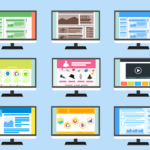Top Spatial Industry Trends to Watch in 2018
For a world that is ever-changing, some industries are more dynamic and evolving than others. One such sector is the spatial industry that is at a nascent stage and about to explode.
The advent of location based technology has only accelerated after the successful launch and operation of advanced satellites and other inventions like drones and global positioning related applications.
This has led to seminal developments like Geographic Information Systems (GIS), Global Navigation Satellite Systems (GNSS) and Remote Sensing. Riding on these are the early spatial advances that include Location Capture, Geocaching, and QR codes that have developed applications at both business and consumer levels. A significant example of this is Google Maps that has revolutionised the way location search happens and the resultant use of such data by businesses.
Being a sunrise industry with a huge potential, spatial and related sub domains like GIS, GPS and enterprise mobility are increasingly getting applied in business and enterprise environments. This has seen substantial benefits both in business expansion as well as risk mitigation and quality control.
This is not surprising, given the scope of modern spatial technology developments in fields like enterprise mobility and workforce management software. With more and more businesses expanding rapidly across the globe, systems like GIS and SAP integration work with cutting edge software available to manage even the most complex of business scenarios. The link between enterprise resource planning and geographical information has, over the years, deepened.
Building on the developments in the spatial industry over the last few years, this year promises to see many more groundbreaking and consequential trends. We list below the ones to watch out for in 2018.
Focussing on the end-user – Improvement in application and consumer end usability
As per Gov2020, a Deloitte initiative, location based services command a market size of US $1.3 trillion in the year 2020. $500 billion is the value that geo-location tools like GPS would generate.
With cutting edge concepts like Internet of Things, Artificial Reality and Virtual Reality and Wearable Technology all set to become the norm of tomorrow, the spatial industry will look sharp.
There is a big opportunity for businesses to take positions on while the gamut of spatial oriented consumer solutions will see much more focus and outcomes.
Focussing on businesses – Helping businesses in managing growth and operations
With location based apps like Google Maps working accurately and seamlessly on multiple platforms, the end use is revolutionising the way both businesses and consumers operate. The resultant data is constantly processed and recycled for sharper and more reliable outcomes.
With a continuous improvement of end user interface on ubiquitous, indispensable devices like the mobile, spatial technologies will be all encompassing. An example of this is the advent and proliferation of location based services.
The spotlight on spatial technologies is high with multiple industries ranging from retail and e-commerce giants to defence, health care to the financial sector and many more.
Focussing on global challenges – Increased versatility and dependency for critical problems
The application of spatial breakthroughs has held out hope across a wide array of challenges in the modern era. Initial usage in these fields has shown the potential that tools like GIS and GPS hold in the future.
One of the most challenging examples is global warming and its ominous ramifications. Monitoring these and gathering precious data will help prioritise the steps regions and authorities need to take. No less disastrous can be the sudden and crippling aftermath of natural calamities. Predicting, tracking and alerting both governments and individuals alike is something spatial technologies can perform with increasing accuracy and automation.
Other crucial areas that merit support include:
- traffic management in large urban areas,
- mapping migratory habits of wildlife and protection of endangered species, and
- assisting in the monitoring of crime and supporting law enforcers.
Given the trends of the last few years, the spatial industry does look all set to become one of the key drivers of businesses and enterprises. It is poised to make some solid contributions along the way in 2018.


















